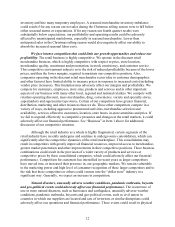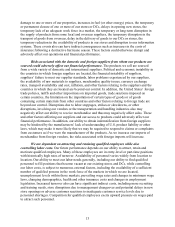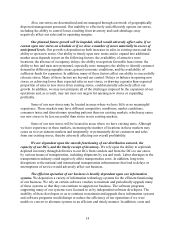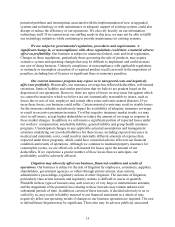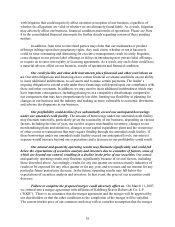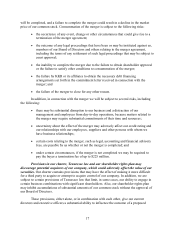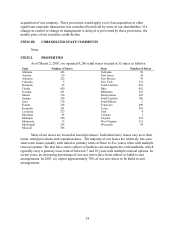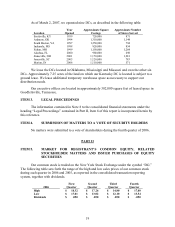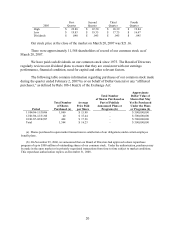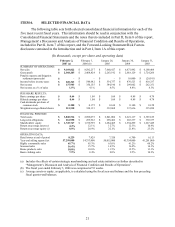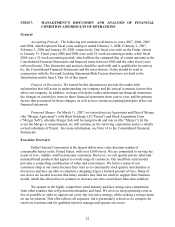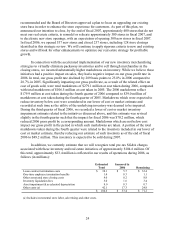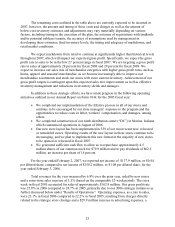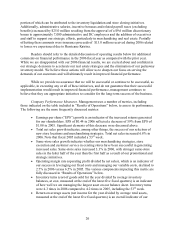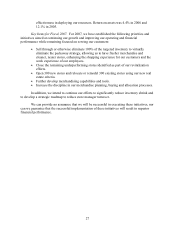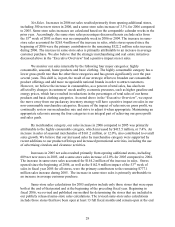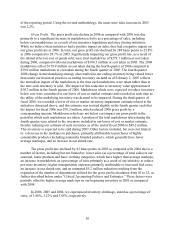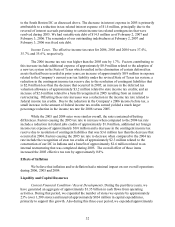Dollar General 2006 Annual Report Download - page 24
Download and view the complete annual report
Please find page 24 of the 2006 Dollar General annual report below. You can navigate through the pages in the report by either clicking on the pages listed below, or by using the keyword search tool below to find specific information within the annual report.ITEM 7. MANAGEMENT’S DISCUSSION AND ANALYSIS OF FINANCIAL
CONDITION AND RESULTS OF OPERATIONS
General
Accounting Periods. The following text contains references to years 2007, 2006, 2005
and 2004, which represent fiscal years ending or ended February 1, 2008, February 2, 2007,
February 3, 2006 and January 28, 2005, respectively. Our fiscal year ends on the Friday closest
to January 31. Fiscal years 2006 and 2004 were each 52-week accounting periods, while fiscal
2005 was a 53-week accounting period, which affects the comparability of certain amounts in the
Consolidated Financial Statements and financial ratios between 2005 and the other fiscal years
reflected herein. This discussion and analysis should be read with, and is qualified in its entirety
by, the Consolidated Financial Statements and the notes thereto. It also should be read in
conjunction with the Forward-Looking Statements/Risk Factors disclosure set forth in the
Introduction and in Item I, Part 1A of this report.
Purpose of Discussion. We intend for this discussion to provide the reader with
information that will assist in understanding our company and the critical economic factors that
affect our company. In addition, we hope to help the reader understand our financial statements,
the changes in certain key items in those financial statements from year to year, and the primary
factors that accounted for those changes, as well as how certain accounting principles affect our
financial statements.
Proposed Merger. On March 11, 2007, we entered into an Agreement and Plan of Merger
(the “Merger Agreement”) with Buck Holdings LP (“Parent”) and Buck Acquisition Corp.
(“Merger Sub”), whereby Merger Sub will be merged with and into us (the “Merger”). In the
event the Merger is consummated, we will continue as the surviving corporation and as a wholly
owned subsidiary of Parent. For more information, see Note 14 to the Consolidated Financial
Statements.
Executive Overview
Dollar General Corporation is the largest dollar store value discount retailer of
consumable basics in the United States, with over 8,000 stores. We are committed to serving the
needs of low-, middle- and fixed-income customers. However, we sell quality private label and
national brand products that appeal to a wide range of customers. Our small box retail model
provides a compelling combination of value and convenience. We believe many of our
customers shop at our stores because they trust us to consistently stock quality merchandise at
low prices and they are able to complete a shopping trip in a limited amount of time. Many of
our stores are located in towns that many retailers may find too small to support their business
model, which has allowed us to continue to increase our store count faster than most retailers.
We operate in the highly competitive retail industry and face strong sales competition
from other retailers that sell general merchandise and food. We strive to keep operating costs as
low as possible in order to support our every day low price strategy while seeking a strong return
on our investment. This effort affects all expenses, but is particularly critical as we compete for
retail site locations and for qualified talent to manage and operate our stores.
22


